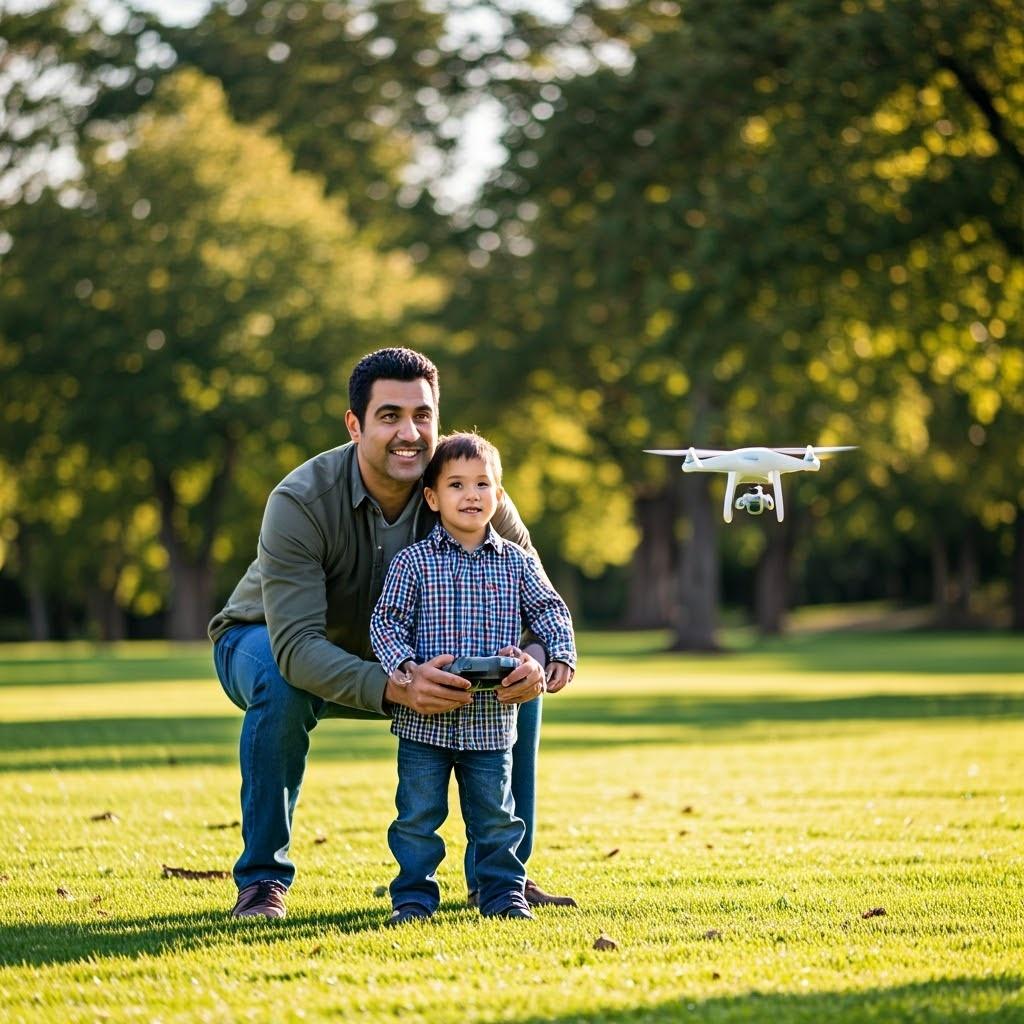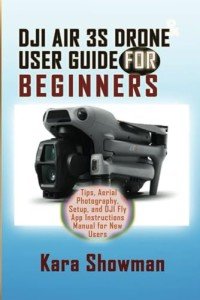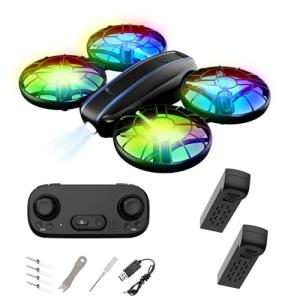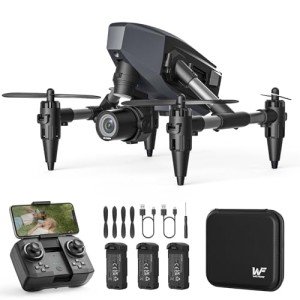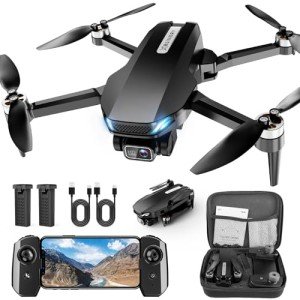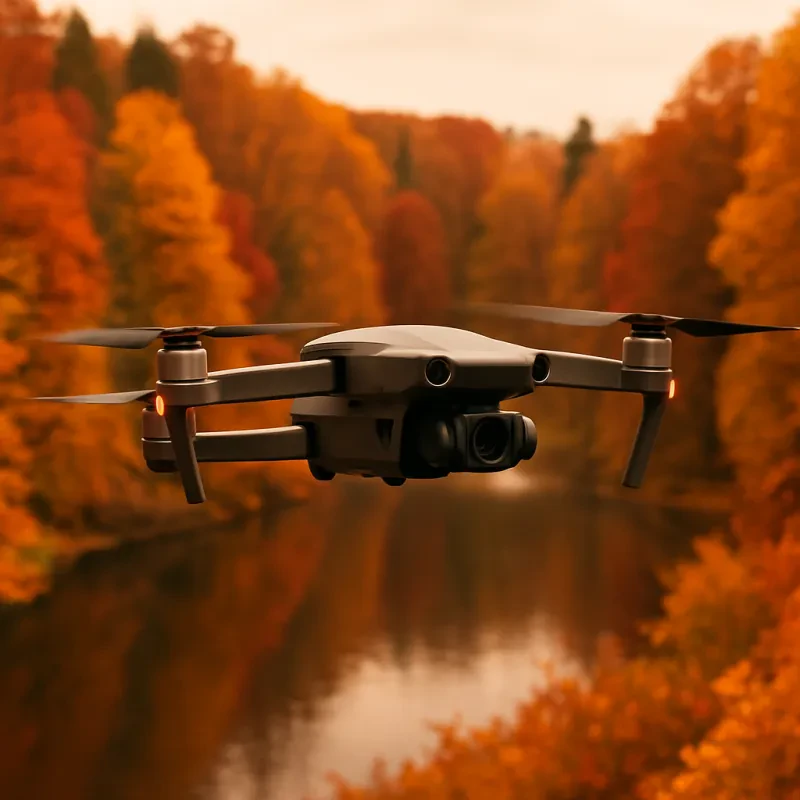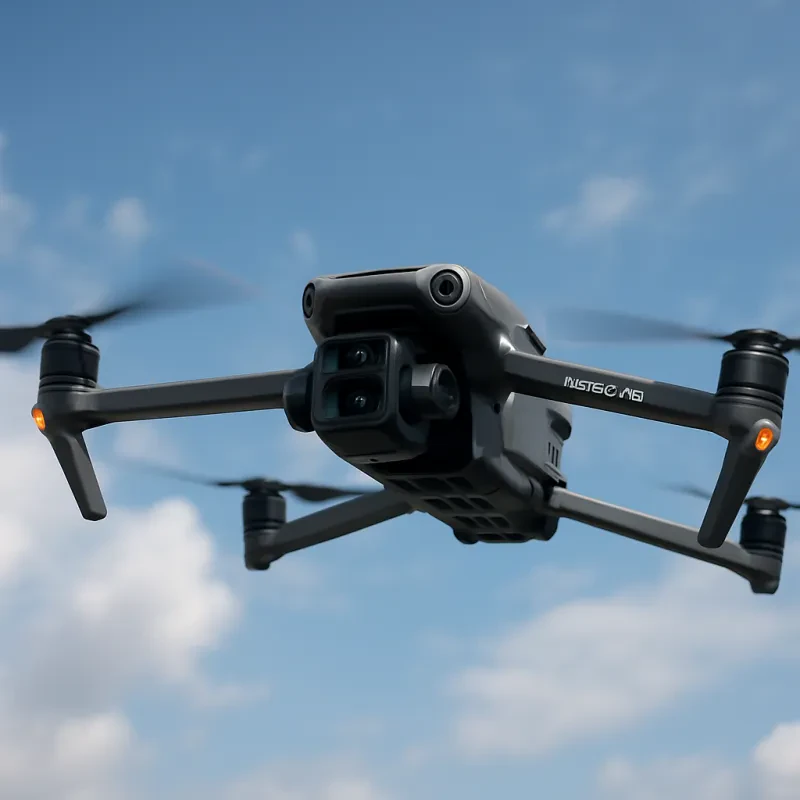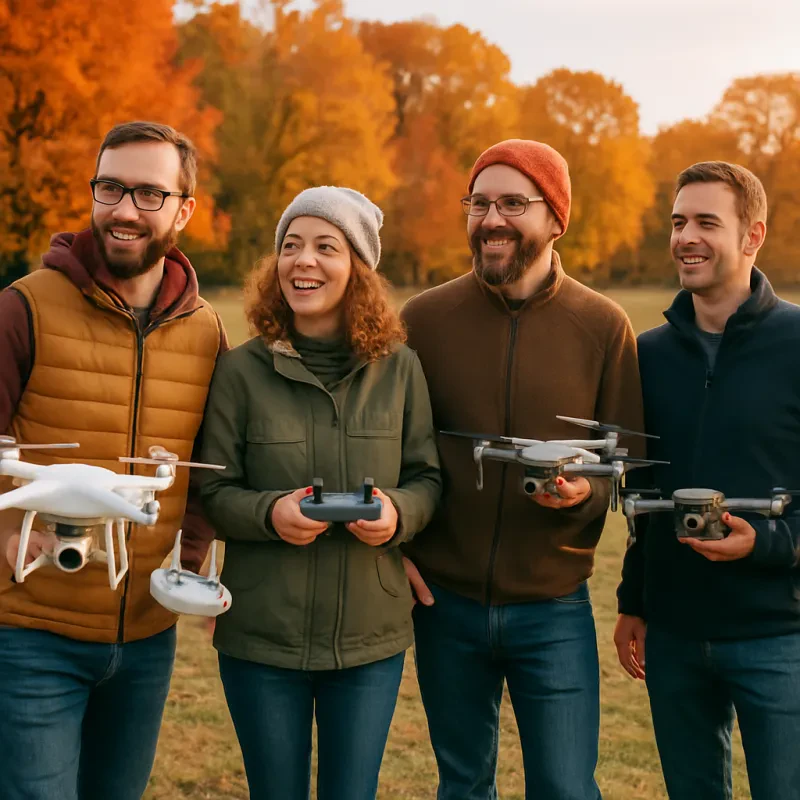What is a Drone?
A drone, often referred to as an unmanned aerial vehicle (UAV), is a flying robot that can be remotely controlled or autonomously navigate through a pre-programmed flight path. Drones are equipped with various technical components that allow them to perform a multitude of tasks ranging from simple aerial photography to complex agricultural monitoring. At their most fundamental level, drones typically consist of a flight controller, a propulsion system, sensors, and a power source. Understanding these components is essential to grasp the capabilities and limitations of a drone.
The most common type of drone is the quadcopter, characterized by its four rotors. Quadcopter drones are favored for their stability, maneuverability, and ease of use, making them popular among beginners and hobbyists. In contrast, fixed-wing drones are designed for longer flights and can cover more distance due to their airplane-like structure. These types of drones are commonly used in applications such as surveying and mapping, where longer flight durations are essential. Hybrid models combine elements of both quadcopters and fixed-wing designs, providing flexibility for different flight scenarios and operational needs.
In addition to the physical structure of drones, their features cannot be overlooked. Most modern drones come equipped with a remote control system, allowing the operator to maneuver the drone effectively. Advanced models also include built-in cameras for high-definition photography and videography, GPS functionalities for accurate positioning, and additional sensors for obstacle detection and navigation. Each type of drone may offer unique specifications and features, catering to diverse applications such as recreational flying, commercial endeavors, and industrial inspections. Understanding these distinctions is crucial for potential users when considering which type of drone is best suited for their intended use.
The Evolution of Drones
Drones, or unmanned aerial vehicles (UAVs), have a rich history that traces back to their roots in military applications. The earliest recorded use of drones can be dated to World War I, when the concept of using remote-controlled aircraft was first explored. These initial attempts focused primarily on creating target practice targets for training purposes. However, as technological advancements progressed, the potential applications of drones expanded significantly.
During World War II, the development of more sophisticated drones took place, particularly with the advent of radio-controlled aircraft. The most notable among them was the Radioplane OQ-2, developed by actor and inventor Howard Hughes. This drone marked a significant milestone in aviation history, as it was one of the first UAVs to be mass-produced, ushering in a new era of remote-controlled flying devices. As technology evolved, so did the uses of drones, shifting from military reconnaissance to various operational applications.
The late 20th century and early 21st century saw a dramatic shift in drone technology, primarily fueled by advancements in electronics and miniaturization. The introduction of GPS, improved batteries, and high-definition cameras transformed the functionality and accessibility of drones. This newfound capability led to the emergence of commercial drones, which began to revolutionize industries such as agriculture, real estate, and aerial photography. By making technology more accessible, hobbyists and enthusiasts gained the ability to purchase and operate drones for recreational purposes.
Today, drones serve a multitude of functions, from delivering goods and conducting search-and-rescue missions to ensuring safety inspections and monitoring environmental changes. The evolution of drones highlights not only the rapid progress in technology but also the increasing acceptance of these aerial devices across various sectors. With ongoing innovations, the future of drones promises continued advancements and applications that will shape industries and everyday life.
Types of Drones for Beginners
As the popularity of drones continues to rise, understanding the different types available on the market becomes essential for beginners eager to explore this technology. Drones can be primarily classified into several categories based on their intended use: toy drones, photography drones, and racing drones. Each of these types serves distinct purposes and has unique characteristics that appeal to novice users.
Toy drones are often the first choice for newcomers. Typically light, compact, and affordable, these drones are designed for casual flight and ease of use. They can be flown indoors or outdoors and are equipped with basic controls that enable beginners to grasp the fundamentals of flying. Prices for toy drones vary, with many options available under $50, making them an accessible starting point for those hesitant to invest heavily in their first drone.
In contrast, photography drones have captured the attention of hobbyists and enthusiasts interested in aerial photography and videography. These drones come equipped with high-resolution cameras and stabilizing systems, allowing them to capture stunning images from above. Beginners looking to dive into drone photography should consider models that offer user-friendly flight modes and built-in editing features. Prices for photography drones can range from a few hundred to several thousand dollars. Thus, individuals should assess their budget and specific needs before making a purchase.
Finally, racing drones cater to individuals interested in the fast-paced world of drone racing. These drones are designed for speed, agility, and responsiveness, providing an exhilarating experience for pilots. While they can be more challenging to control, many racing drones today are available in beginner-friendly formats that include pre-built models and those with customizable features. Pricing for racing drones can vary widely depending on the quality and specifications, with entry-level models typically starting around $100.
Understanding these categories helps beginners make informed decisions when selecting their first drone, ensuring an enjoyable and rewarding experience in the exciting realm of drone flying.
Understanding Drone Features and Specifications
When it comes to selecting a drone, beginners should consider several essential features and specifications that significantly influence the performance and usability of the device. One of the primary aspects to evaluate is flight time, which determines how long the drone can stay airborne on a single charge. Most consumer drones offer flight times ranging from 10 to 30 minutes, with some high-end models providing even longer durations. Understanding battery capacity in milliampere-hours (mAh) can also help users make informed decisions when comparing drones.
Another critical specification is the range of the drone, which defines how far it can fly from the remote controller. Range can vary significantly across models, with some entry-level drones offering effective control only up to a few hundred meters, while advanced models can operate several kilometers away. A longer range allows for more expansive aerial photography and the ability to explore difficult-to-reach locations, making it an important aspect for those interested in capturing scenic vistas.
Camera quality is an essential feature for those interested in aerial photography or videography. Drone cameras come in various resolutions, typically ranging from 720p to 4K, with higher resolutions offering sharper images and more detail. In addition, the stabilization features of the camera can greatly enhance footage quality, mitigating the effects of wind and vibrations while flying. Understanding a drone’s gimbal system and its capabilities can make a significant difference in video output.
Beginners should also pay attention to the drone’s stability. Features such as GPS positioning and altitude hold contribute to maintaining stability during flight, allowing for smoother operation and the ability to capture clear, steady images. Lastly, ease of use should not be overlooked; selecting a drone that offers user-friendly controls and automated flight modes can significantly enhance the flying experience for novices.
Getting Started: First Steps for Beginner Drone Pilots
For enthusiasts eager to delve into the world of aerial technology, the journey begins with a clear understanding of essential components involved in piloting a drone. The first step for beginner drone pilots is familiarizing themselves with the basic controls. Most consumer drones operate using a remote control, which usually has two joysticks: one for altitude and yaw control, and another for pitch and roll. Before taking off, it is advisable to spend some time practicing these controls on a simulator. Many manufacturers offer virtual flight environments that replicate the drone's performance, allowing novices to gather experience without the risk of crashes.
Selecting a safe flying location is equally crucial. Beginners should seek out open spaces away from crowded areas and obstacles such as trees and power lines. Local parks or designated drone flying areas are ideal for novice pilots, as they provide ample room to maneuver while minimizing potential hazards. Additionally, it is important to check local regulations regarding drone usage, as many jurisdictions impose restrictions regarding where and when drones can be flown. Understanding these guidelines can help avoid legal issues and contribute to a safer flying experience.
Before launching, conducting thorough pre-flight checks cannot be overlooked. This includes inspecting the drone for any physical damages, ensuring the battery is fully charged, calibrating the compass, and checking the propellers for any obstructions or wear. Verifying the firmware is up-to-date is also recommended, as manufacturers often release updates that improve performance and safety features. By diligently following these preliminary steps, beginner drone pilots can significantly enhance their confidence and readiness for a successful inaugural flight.
Understanding Drone Regulations and Safety Guidelines
As the popularity of drones continues to grow, it becomes increasingly vital for beginners to familiarize themselves with both local and federal regulations governing their use. Compliance with these regulations not only ensures the safety of the operator but also protects the general public and promotes responsible flying practices. One of the essential steps for novice drone pilots is registering their UAV (unmanned aerial vehicle) with the relevant authorities. In many countries, the registration process requires providing personal information and details about the drone, ensuring accountability and traceability.
In addition to registration, drone operators should be aware of restricted flying zones. Certain areas may be designated as no-fly zones due to security concerns, such as airports, military installations, and high-density urban environments. These restrictions often fall under the jurisdiction of the Federal Aviation Administration (FAA) in the United States or similar regulatory bodies worldwide. It is crucial for beginners to consult maps or apps specifically designed to highlight these areas and ensure they are in compliance before taking to the skies.
Moreover, safety practices are paramount in fostering a culture of responsible drone usage. Beginners should always conduct a pre-flight checklist that includes examining the drone for any physical damage, checking battery life, and ensuring that the navigation systems are functioning correctly. Maintaining a safe distance from people, animals, and property is essential to prevent accidents and injuries. It is also advisable to keep the drone within the operator's line of sight at all times, which enhances control and situational awareness.
In summary, understanding drone regulations and adhering to safety guidelines is crucial for new drone enthusiasts. By taking the time to learn and comply with these measures, operators can enjoy a more fulfilling and secure flying experience, contributing to the safe integration of drones into everyday life.
Fun Activities You Can Do With Drones
Drones have evolved significantly over the years, offering numerous fun activities that cater to a wide range of interests, especially for beginners. One of the most popular activities is aerial photography. Drones equipped with quality cameras can capture stunning images from unique perspectives, allowing users to explore their surroundings in a novel way. Whether it’s documenting a scenic landscape or capturing memorable moments during events, aerial photography provides a creative outlet for beginners.
Videography is another appealing venture for drone enthusiasts. With the ability to record high-definition video, drones can produce compelling cinematic footage. Beginners can start by creating short films or vlogs, showcasing their local area or personal experiences. This not only enhances their videography skills but also helps in understanding the nuances of drone controls and camera settings. Collaborative projects with friends can further foster creativity and innovation.
For those seeking a more competitive angle, drone racing offers an exhilarating experience. It involves piloting drones through intricate obstacle courses at high speeds. Beginners can join local clubs or online communities to learn more about racing techniques and participate in events. This activity not only hones piloting skills but also introduces the concepts of aerodynamics and drone mechanics, making it both educational and entertaining.
Finally, experiencing FPV (First Person View) flying can be an exhilarating pastime. By wearing goggles connected to the drone, pilots get a real-time view from the drone's perspective, creating an immersive flying experience. This is especially thrilling for beginners who are eager to feel like they are truly soaring through the skies.
These activities demonstrate just a fraction of what drones can accomplish. As beginners delves into the world of drones, they will discover countless ways to engage with this exciting technology while enhancing their skills and creativity.
Tips for Improving Your Drone Flying Skills
Improving your drone flying skills requires a combination of practice, patience, and resourcefulness. One of the most effective strategies is to establish a regular practice routine. Set aside dedicated time each week to fly your drone in various conditions. This will help you become familiar with the controls, as well as understanding how environmental factors such as wind and weather can affect your drone’s performance.
Consider joining local drone clubs or organizations. These groups often provide a wealth of knowledge and experience, offering a supportive environment for both novice and seasoned pilots. By engaging with fellow drone enthusiasts, you can share tips, participate in group flights, and even attend workshops designed to enhance flying techniques and safety practices.
Utilizing drone flight simulators can also be highly beneficial for beginners. These simulators offer a safe and controlled environment to practice flying without the risk of damaging a physical drone. Many simulators replicate real-world physics, allowing you to experience different flying scenarios, which can enhance your skill set. Regular simulation practice can build your confidence while honing your ability to navigate challenging situations.
Moreover, learning from online communities and tutorials can significantly accelerate your improvement as a drone pilot. Websites and forums dedicated to drones often feature instructional videos, articles, and discussions that cover a wide array of topics—from basic maneuvers to advanced techniques. Engaging with these resources can broaden your understanding of drone technology and the best flying practices.
By combining consistent practice with community involvement, simulator usage, and online learning, you can steadily develop your drone flying skills. These strategies will empower you to explore the potential of your drone confidently and proficiently.
Future Trends in Drone Technology
As the drone industry continues to evolve rapidly, beginners should be particularly keen to understand the emerging trends that shape its future. One notable trend is the advancement in automation technologies. Drones are becoming increasingly capable of performing complex tasks autonomously, thanks to enhanced sensors and navigation systems. These automated features not only reduce the need for manual control but also improve safety and efficiency for various applications, from agriculture to logistics.
Another significant trend is the integration of artificial intelligence (AI) within drones. The application of AI algorithms allows drones to analyze data in real-time, enabling them to make informed decisions without human intervention. This integration is particularly valuable in fields such as search and rescue, where drones can evaluate environments and identify targets through sophisticated image processing capabilities. As AI technology advances, we can expect drones to become smarter and more versatile, opening up new possibilities for innovation.
Moreover, the potential expansion of drone applications across various industries presents exciting opportunities for beginners. Beyond traditional uses like aerial photography and surveying, drones are increasingly being employed in fields such as environmental monitoring, infrastructure inspection, and even healthcare delivery. With regulatory frameworks evolving to accommodate these new applications, it is essential for novices to stay informed about industry changes and be open to exploring unique uses for drones.
In light of these advancements, beginners should actively seek knowledge about current trends and consider how they can leverage new technologies in their endeavors. By staying up-to-date with the latest developments in automation, AI integration, and expanding applications, newcomers can position themselves advantageously in the rapidly shifting landscape of drone technology.
